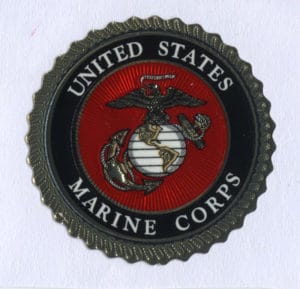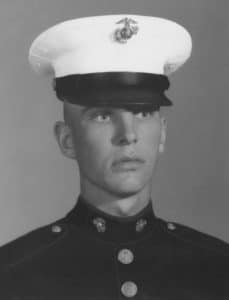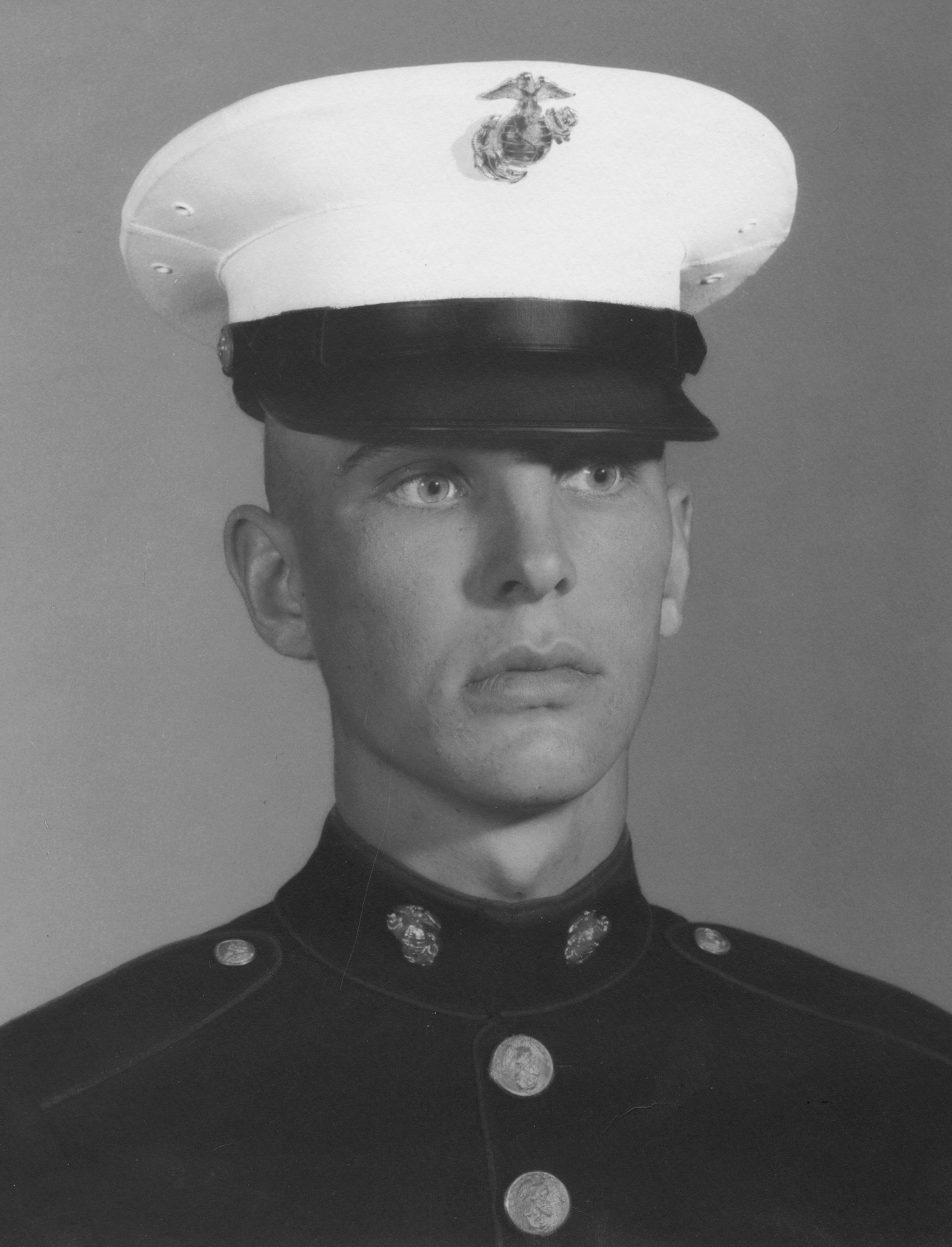The American Legion is celebrating its 100th birthday in 2019. In addition to national and statewide activities commemorating this milestone, American Post 328 of St. Joseph is planning a number of festive and patriotic activities for the community.
One of those special events will be profiles of St. Joseph-area veterans published in each Newsleader during 2019. The Newsleader is joining with Post 328 to recognize veterans and Legion members who served during World War II, Korea, Vietnam, Iraq, Afghanistan and other theaters of conflict and Cold War tensions.
by Tom Klecker
St. Joseph American Legion
Michael “Mike” Paul Phillipp, 69, United States Marine Corp – Vietnam Era
Phillipp was born in Watkins. He was the youngest of seven. He was raised on a dairy farm in rural Meeker County. He was a member of the last graduating class of St. Boniface High School in Cold Spring (1968).
After graduation Phillipp worked at many different jobs.
After exploring other service branches, Phillipp enlisted in the Marine Corp at the age of 18 in November 1968.
With a deferred date of being activated on Dec. 4, 1968, and being unemployed for that month, his father found him a job skinning mink.
Phillipp spent 12 weeks in basic training at San Diego, California. Initially soaking wet and with a pocket full of rocks, His weight was a mere 120 pounds at that time. During the course of his enlistment, and with the assistance of the Marine Corp, Phillipp put on an additional 45 pounds.
After basic training, Phillipp was transferred to Camp Pendleton, California, for advanced combat infantry training. His Military Occupational Specialty was that of a rifleman, aka a “grunt.”
Before being sent overseas, Phillipp was granted a 20-day leave when he met his future wife Kathy at the Richmond Colosseum.
Upon returning to Camp Pendleton, he boarded a plane for Vietnam. The original flight plan was: depart Pendleton-refueling in Hawaii-Okinawa-Da Nang, Vietnam.
As fate would have it, the plane door could not seal properly. Until repairs could be made, Phillipp and others were put up in a fancy hotel in Hawaii. Restricted to their rooms and with Army MPs in the hallways, Phillipp and some of his buddies escaped their hotel room. They shimmied down the drain pipe outside the window and commenced to get drunk in Honolulu that night.
Phillip was 19 years old when he arrived in Da Nang, Vietnam. Upon arrival in Vietnam, he was immediately sent to school so as to learn the Vietnamese language. Not unlike Chinese, Vietnamese conveys meaning not only by way of the selection of a word but also by the intonation of the word which could have a different meaning altogether. The language class lasted 10 days.
After completing the class, Phillipp boarded a C-130 transport plane to Phu Bai which became his home base camp for the 3rd Marine Division.
Two days later he was transferred to a rural Vietnamese village, “somewhere in the toolies.”
Phillipp became a member of the Combined Action Program Unit 3-1-7. Each unit was assigned to protect remote villages.
The unit was made up of a 14-man rifle squad, the unit Navy corpsman and a platoon of villagers, usually armed older men, women and children . . . a somewhat motley militia.
In rotation, this group would go out and about the villages on recon patrols and set up ambushes for Viet Cong and North Vietnamese Army regulars. Phillipp said, “My job was recon and ambush every other day.”
Marine Corp historical records state: “That this particular operational initiative proved to be one of the most effective counter-insurgency tools developed during the Vietnam War.” The goal was to deny the enemy sanctuary in 800 hamlets.
Phillipp experienced substantial combat. To paraphrase a combat-seasoned chaplain: “combat cuts away all the superficiality and artificiality of civilian life. There remains nothing but bedrock character.” (The Rev. Francis L. Sampson)
Within a few weeks Phillipp came to believe he would not make it home. For Phillipp, “it became a matter of day-to-day survival.”
Relative to those in Phillipp’s platoon and his emotions toward them, he exhibited what in psychology is referred to as “cognitive dissonance.” It is the conflicted feelings and thoughts between what came to be an intense trust and love for his buddies, while simultaneously Phillipp trying not to get close to anyone for fear of them dying. “They were like my brothers.”
Phillipp remembers one particular marine. “He taught me a lot. I made it home because of him.”
“The people in the villages treated us well in spite of some initial mistrust as to whether they supported the Viet Cong. I felt bad for these simple Vietnamese villagers; they just wanted to live in peace.”
After 11 months and 26 days (like whose counting the days) Phillipp’s Vietnam tour was concluded in body, but not in mind.
Even after 47 years, he relives, in some measure, PTSD, for which he has a service-connected disability.
Upon arriving back in the United States, Phillipp said he was “totally flabbergasted. I thought now I can go on with my life and make plans.” It was 1970.
Phillipp went to work at Cold Spring Granite, but shortly thereafter went back to school under the G.I Bill. He completed a carpentry program at St. Cloud Technical College. For a while he worked as a carpenter in the Twin Cities. Later Phillipp worked at two foundries, Grady and DeZurik’s for 35 years. He retired two years ago. All things considered, he is enjoying retirement.
Kathy, the girl Philipp met at the Richmond Colosseum while on leave, and who wrote to him while in Vietnam, became his bride in 1972. They have been married for 47 years.
The Phillipps have four children. On one or two days of every calendar year the three boys are the same age. Mike and Kathy have lived in St Joseph for 46 years.
Not all the battles are over for this Marine. Of late Phillipp has been diagnosed with cancer and COPD. He is realistic but also optimistically confident about the future.


Michael Phillipp 1968.




